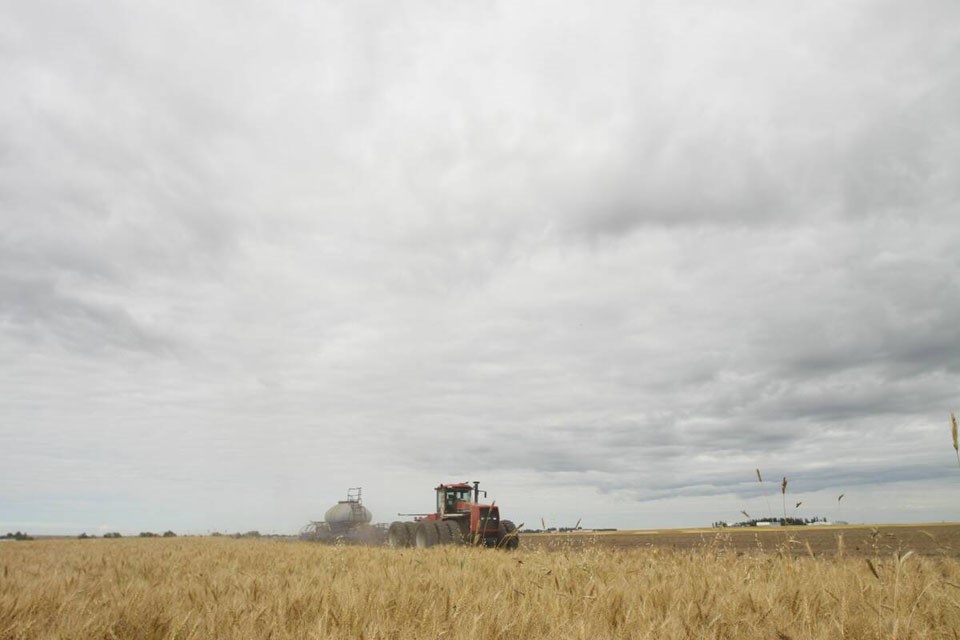WESTERN PRODUCER — The average value of Canada’s cultivated farmland grew by 9.3 per cent in 2024, less than its growth in 2023 but nevertheless a “robust” number, says the chief economist of Farm Credit Canada, which released its annual Farmland Values Report March 18.
“It’s a little bit under what it was in 2023 (11.5 per cent) … which was itself a little bit under what it was in 2022 (12.8), so there’s a little bit of evidence that market for the increase in farmland values is slowing down, but it still remains a very large increase when you look at what it means in terms of dollar per acres and so forth,” J.P. Gervais said.
In terms of sheer growth, the two big winners were Saskatchewan, which came in first for the second year in a row at 13.1 percent, and British Columbia at 11.3 per cent.
Ongoing interest in Saskatchewan farmland has been driven to a large extent by affordability, at least compared to most other provinces, said Gervais.
For example, in northwestern Saskatchewan ranged from $1,700 to $5,000. By comparison, Alberta’s per acre value in the northern region ranged from $2,100 to $8,000.
The other reporting provinces featured growth in the single-digit range. New Brunswick’s cultivated average land values grew by nine per cent, Quebec reported a 7.7 per cent increase with Alberta close behind at 7.1 per cent. Manitoba grew at a rate of 6.5 per cent and Nova Scotia’s appreciated by 5.3 per cent.
Ontario’s farmland value grew by 3.1 per cent, while Prince Edward Island increased by 1.4 per cent.
The only provinces to report higher growth rates in 2024 than 2023 were B.C., Alberta and New Brunswick. There was insufficient data to fully assess changes in Newfoundland and Labrador, Northwest Territories, Nunavut and Yukon.
Recent dry seasons in concert with fierce consumer interest accelerated demand for irrigated land. For example, irrigated acres in Alberta increased by 8.6 per cent with a range of values per acre from $11,400 to $24,000.
Although not as dramatic as Alberta’s growth, Manitoba’s irrigated acres saw a value increase of 3.5 per cent; the irrigated Westman and Central Plains-Pembina Valley areas saw farmland values range from $7,500 to $15,100 per acre. Saskatchewan’s irrigated land values run from $6,800 to $9,500 per acre.

FCC chief economist J.P. Gervais presented his interpretation of the lenders 2024 farmland values report. | Photo courtesy FCC
According to the report, supply of irrigated farmland is expected to remain tight as producers in this category tend to retain their land.
Affordability was one of the factors slowing farmland growth in Canada in 2024. Farmland affordability relative to farm income continues to decline, said Gervais, — particularly young producers, Indigenous people and new entrants — to expand their land base.
“The profitability pressures combined with the current uncertainty with regards to trade disruptions create significant headwinds for farm operations looking to invest,” said Gervais.
Speaking of trade disruptions, Gervais was questioned about what this all means in the context of U.S. President Donald Trump’s ongoing pursuit of 25 per cent tariffs on Canadian goods.
He chose to use the term “trade disruptions” instead of “tariffs” to acknowledge other potential barriers to trade, such as U.S. country-of-origin labelling, which is scheduled to take effect in January 2026.
Gervais monitors three factors when mulling trade disruptions: uncertainty, interest rates and revenues. Uncertainty is a major impediment to investment, he said, meaning producers are less likely to invest in their futures or businesses.
The farming sector is a highly intensive capital industry with small margins. Many other industries — mining, for example — also require a lot of capital but tend to have larger margins.
“Usually, if you look at the margin over the long term, return on assets, return on equity of farming, that’s very thin compared to other sectors.”
His second thought is interest rates, which in Canada have been something of a roller coaster ride over the past few years.
“Obviously in the last couple of years, we’ve had inflation go up, interest rates went up, we started to see inflation come down, and then we started to see interest rates come down starting in the summer in Canada.
“So maybe the decline in interest rates has explained a little bit of the uptick in farm values we’ve seen.
“If we do have low interest rates, maybe that’s going to cushion a little bit or offset some of the weaker demand for farmland because of the uncertainty.”
Finally, he monitors revenue, which Canadian agriculture has taken a hit on over the past few years.
“The bottom line, if you look at crops or grains, oilseeds and pulses, and if you look at the Prairies, we had an 11.3 per cent decline on the Prairies for crop revenues. Again, grains, oilseeds, pulses — the forecast now is another decline in 2025.”
Gervais pointed to canola as an example of a major drop in prices, citing a 2025 forecast of canola receipts that suggest revenue will drop by as much as 13 per cent.
He didn’t sugarcoat the impact tariffs and other trade disruptions will have on producer revenues.
“If we have tariffs, whether it’s (from) China, the U.S., any type of other trade disruptions, anti-dumping investigations — all of those things are going to have a significant negative impact on the bottom line of Canadian farm operations.”
However, Gervais remains optimistic.
“The demand long-term is still very strong, I think. It doesn’t change the story we have for Canadian ag, which is the world needs more of what we grow. So that doesn’t change. But it’s the short term, and the extent to which these disruptions are going to last, that’s going to have an impact.”
So how long are these trade disruptions going to last? Your guess is as good as Gervais’s.
“Your crystal ball is as good as mine. I can’t say anything other than what the markets are telling me today and the numbers I’m quoting are based off what the markets are telling us. It’s not what J.P. thinks.”
About the author
A graduate of the Lethbridge Communications Arts program, Jeff’s career has included writing and editing for a variety of Alberta publications and agencies, including the Temple City Star, Meristem Resources and Prairie Hog Country.




